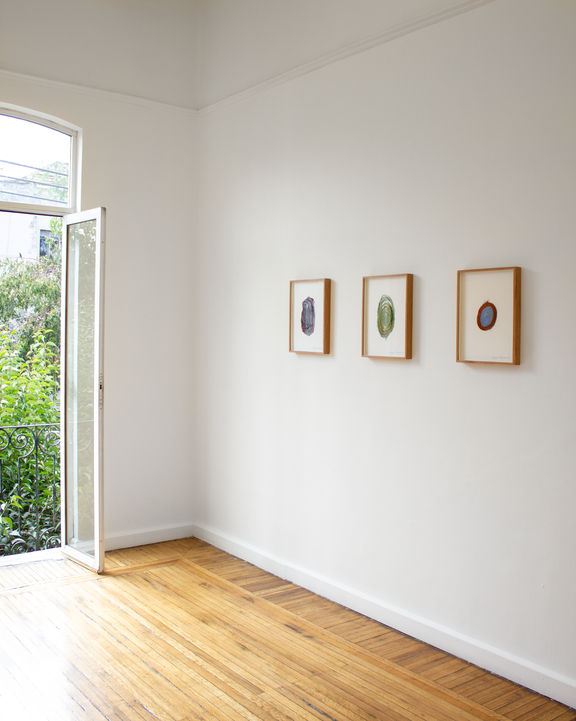Couldn´t Create Thread
spirals
for Marie Hazard
a spiral with a definition
a space between the here and now
fine line of destiny and fatality
created just as it finishes
in the paradox of a boundless reality
I’m no longer afraid
a spiral without an expiry date
time is only a subject
all is but a moment
one leading to another
each dying in the other’s death
I’m no longer afraid
the spiral suffocates
like the city I am leaving
in twists and turns
and yet pushing me far away
it’s the spiral that’s leaving me
I’m no longer afraid
The line follows a single law: of never being interrupted. In our linear lives, our wired lives,
the spiral is a salvation. It becomes evidence to protect us from this linear destiny. In all its
paradoxical existence, it makes us swing between the infinite and the finite, between empty
and full, between promise and destiny. Although it is dangerous, it protects us as much as
it renders up captive. The sweet and reassuring spiral becomes a maelstrom in the depths
of our being. In the face of it we are left with just an ounce of autonomy; what should we
make of this abstraction?
A millennial, it expresses itself in everything. In galaxies, winds, in nature, in living beings.
Some dance, in the spirals of bodies and minds, all the way to ecstasy, the collapse of the
ego. To destroy everything, burn everything. In belly dance, the spiral enables the
hypnotizing tarab, the mysterious force of the dancer allowing her to transcend and bring
her audience to a climax. Again, the spiral in oriental dance creates its own paradox: the
tarab is reached through the inner movements of the body, while it seemingly remains
motionlessness.
Others weave. What is more symbolic than interweaving, elliptical threads? The propeller
never stops, drawing its infinity into the artist’s movement. It acts as a spring in a kind of
balance of opposites. Marie’s spirals are both memories and promises. There is a longing
for somewhere else, striving to transcend her weaving loom through the very essence of
her work. However, she seems to find herself in it, tirelessly exploring colours, materials,
and techniques, finding answers as she moves through her choices. She invites us into
her practice, dancing in her own way, following the rhythm of her warps. Where is she
taking us? The path is in ourselves; we are weaving it each day, following the clues sown
by the spirals, the movement they create and in their strictly soft arms.
Lorraine de Thibault
Marie Hazard (b. in 1994)
After completing studies at the Atelier de Sèvres in Paris, Marie Hazard went to London to pursue textile design at Central Saint-Martins. Her medium of choice is weaving: before taking to her own loom, she assisted American artist Sheila Hicks, a leading figure of the textile art movement of the 60s. Hicks is known for her innovative revival of traditional weaving practices. Weaving had long been considered more craft than art, but weaving techniques would enter the vocabulary of contemporary fine art through the work of Bauhaus artists such as Annie Albers, and later, the Arte Povera movement, including the work of Alighiero Boetti.







